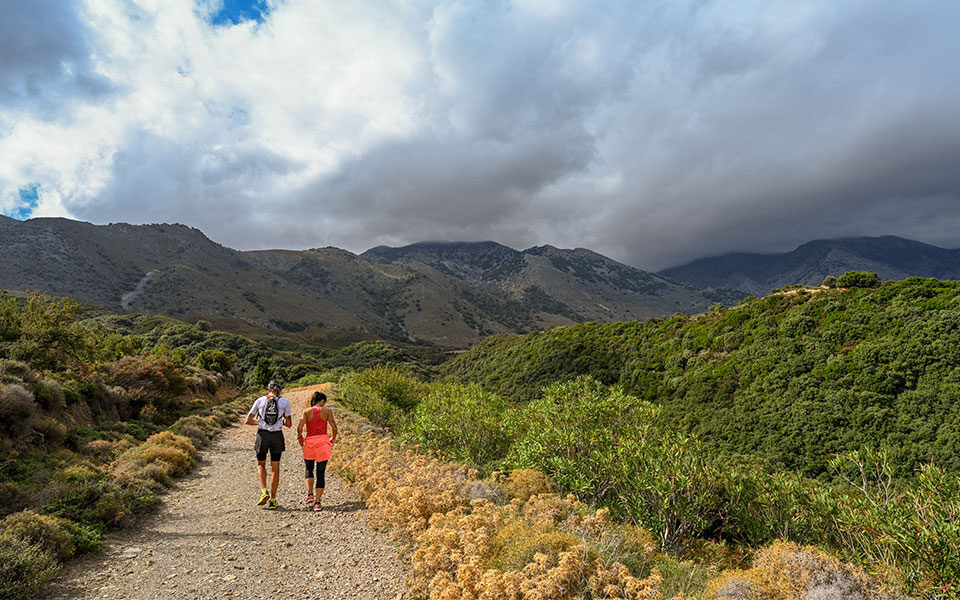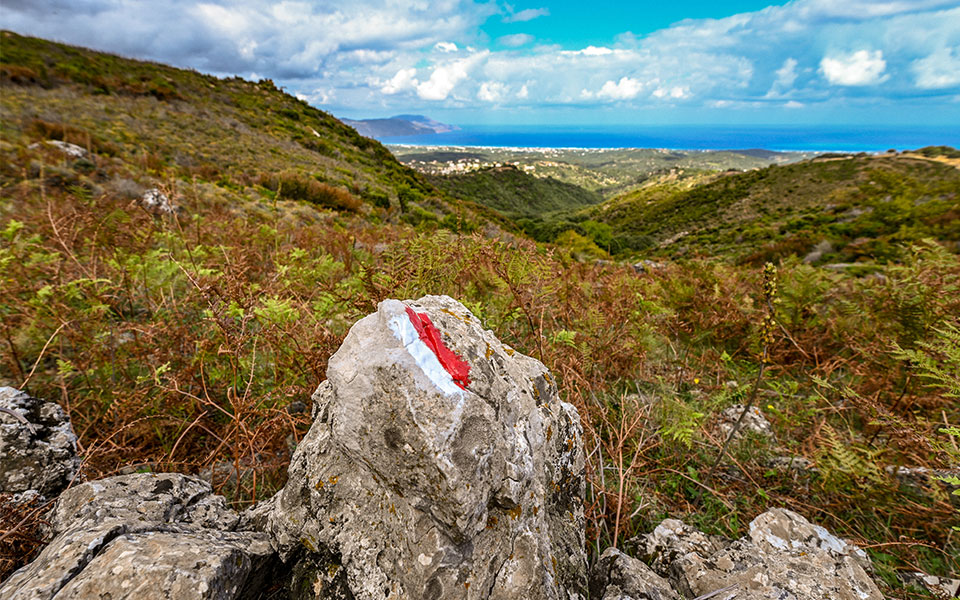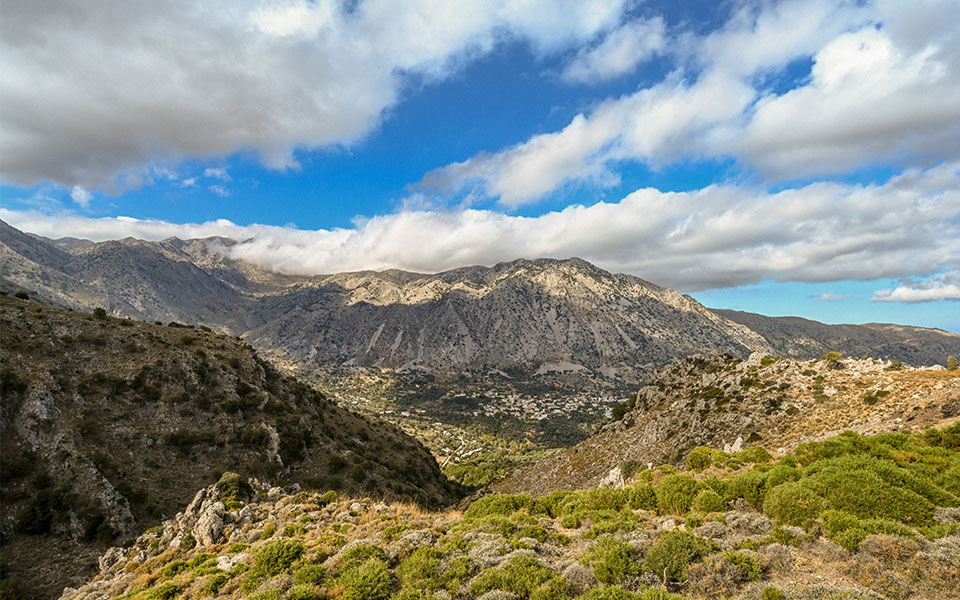Walking Through Time in Hania’s Old Town
A journey through Hania’s Venetian past,...

Last March, Frenchman Sylvain Bazin gave a speech about his vision and passion at France’s premier exhibition for hiking, the Salon de Randonneur in Lyon. Bazin is a travel writer and editor-in-chief of Wider Trail Outdoor magazine, which specializes in outdoor activities such as hiking, cycling and long-distance running.
After the end of his speech, an unknown man approached him: “I am from Crete, where we have created new hiking trails. Would you be interested in visiting them?” he asked.
Bazin accepted the proposal made by Dimitris Michelogiannis, Regional Vice Governor for Development in Crete, the man who had approached him. And so, for 15 days in October, Bazin came to the area of Apokoronas in Hania, where he hiked the region’s trails with the assistance of maps and applications.

The network of routes and trails at Apokoronas in Hania is composed of 12 trails, altogether measuring a total of 150km. Some of these already existed and have been repaired, while some of the existing routes were extended. The Region of Crete and the Municipality of Apokoronas are both responsible for the preservation, connection and operation of the trails, which will be open at the end of the year.
The first route was delivered to the public in mid-October and cyclically connects the abandoned ancient city of Aptera, the Byzantine churches in the region’s semi-mountainous areas and the Kiliaris valley with the Itzedin fortress, one of the major defensive structures built by the Ottomans at the port of Souda. Bazin hiked along all twelve trails.
“The footpaths were mostly at low and medium altitudes. Some are difficult and challenging, since they are not yet complete, while others are more physically demanding for hikers. Overall, the network is exceptionally interesting, and it also boasts a variety of trails for families,” says 44-year-old Bazin.
The Apokoronas network offers rich images to visitors: landscapes with contrasts in the heights of the Lefka Ori (the “White Mountains”), passages through villages teeming with cypress trees such as Vafes, Tzitzifies and Fres, unique fairytale-like forests by the sea, lakes, historical landmarks and sites of remembrance and religious interest from the Venetian and Ottoman periods around Vamos, the historic capital of the region, as well as the area of Apokoronas that is well known for its agro-tourism. “This variety is deeply enjoyable, as every day I would discover a new aspect of Apokoronas,” he adds.

The trails of Apokoronas are added to a series of hiking routes on Crete, such as those in the Samaria gorge (which according to Bazin is beautiful, but only showcases one aspect of the island’s natural beauty), and the 77 sections of the E4 European hiking trail that begins in Kastelli Kissamou, traverses all of the island’s regional units, and terminates in Kato Zakros in Lasithi.
The comparative advantage of the new network, according to the French journalist, is the fact that it connects the region’s villages with the surrounding natural environment. “In France, this type of trail has been around for the last 30 years. Hiking is hugely popular and I am excited to share my experience on Crete with the French public, who I am sure will be very interested in them.”
What was it about Apokoronas that won him over? “I got the feeling of experiencing a genuine and profound ‘agricultural exploration,’ meaning that I discovered small villages, nature and mountains where I would encounter just sheep and dogs. I was surprised by the intense contrasts I saw in the Cretan countryside. On the one hand, I would see old houses that have been restored, next to structures in ruins. On the other hand, I would see modern houses with an ugly aesthetic or even rubbish next to gardens, or old wells. It reminded me of certain parts of southern Italy, but I soon realized that these contrasts are an integral part of Crete’s charm. The network of hiking trails gave me a glimpse into the reality of life and nature, in all its forms, even when there are contradictions.”
A journey through Hania’s Venetian past,...
Discover Crete’s iconic sarikopites – delicate...
A steep and curvy drive high...
From Santorini sunsets to ancient ruins,...